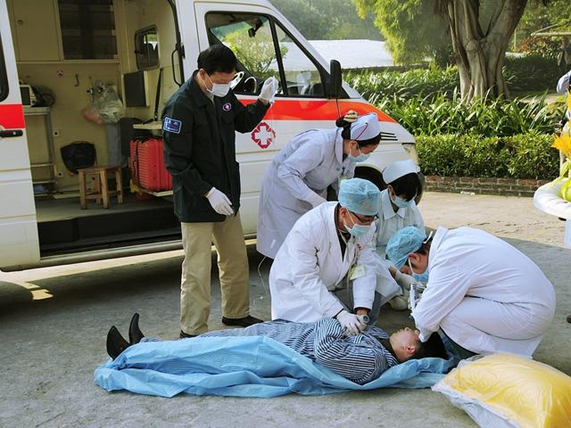
Medical alert systems may not sound like a necessary investment for most people in their formative years. But as we age, we gradually start to appreciate the significance of these emergency medical equipment.
In this article, we’ll provide a comprehensive guide to medical alert systems and their significance for your elderly family and friends.
A medical alert system is a suite of equipment used for emergency health monitoring. These devices let you track the whereabouts and medical conditions of your vulnerable family members, be it at home or on the go. They’re also known as personal emergency response systems (PERSs).
Medical alert systems were invented to assist older adults in pursuing a life of freedom and independence in their sunset years. The devices also provide peace of mind to loving family members and professional caregivers, allowing them to keep tabs on the patients under their watch.
The past few years have witnessed a tremendous surge in the demand for medical alert systems Canada. Some research is all it takes to find a provider whose offerings align with the health conditions you’re trying to monitor in your vulnerable family member.
The type of equipment used in medical alert systems depends on whether it’s an at-home or an on-the-go system.
Most at-home medical alert systems come with a base unit that you install in a desired location in your home. This unit connects wirelessly to wall-mounted sensors or wearable devices, which can be used to sound emergency warning bells.
On the other hand, on-the-go medical alert systems typically don’t require a base unit. Instead, they’re available as lightweight, wearable help buttons powered by rechargeable batteries. You can wear the button as a watch, bracelet, or necklace. Some people also prefer to pin the wearable on their belt loops or simply carry it in their pockets.

Medical alert systems can help you track several health conditions.
Most equipment is fitted with motion detectors that monitor falls. They sound an alarm bell when your vulnerable family member misses a step and falls, facilitating a prompt response. The fall detection feature is particularly invaluable, considering that a staggering one-quarter of all American adults report falling every so often.
Some medical alert systems come with additional monitoring features, including;
Whether at home or on the go, medical alert systems follow a general principle.
Most systems come equipped with a help button. As already mentioned, this button can be worn on the wrist, neck, belt etc.
The wearable should be comfortable enough to have at all times. It should also be remarkably waterproof and worn in various weather conditions, including showering.
Now, a single help button press immediately sends an alarm to a 24/7 emergency call center, revealing the user’s location.
An operator at the call center will quickly access the patient’s health records to better understand the medical emergency services they might require. The operator may establish a two-way communication to further assess the situation before contacting the caregiving parties or emergency responders whose contacts already appear in the user’s records. These could be a family member, friend, neighbor, and/or emergency service provider.
Note that a medical alert system’s user should stay on the line until help arrives.

Medical alert systems are designed to be easy to set up.
When you first purchase the equipment, you’ll typically start by plugging the base unit or charger into your home’s electrical outlet to test the help buttons.
Remember that the help button is the most critical component of medical alert systems. So, you want to ensure it functions properly from the get-go.
Fortunately, most medical alert equipment comes with detailed instructions for easy set-up. Some companies even provide built-in voice prompts for handy guidance through the installation process. Besides, you can always contact customer support if you run into problems setting up your newly acquired medical alert system.
By now, you’ve probably figured out that medical alert systems fall into two broad categories - at home and on the go.
At-home medical alert systems are perfect for seniors with chronic diseases and impaired mobility. These systems can be instrumental whether the intended recipient lives independently and prefers to age in place or lives in an institution and requires active monitoring by caregivers.
As mentioned, most at-home medical alert systems come with a base station that you install in a desired spot in your house. They also include a wearable device that features an in-built help button. The wearable connects to the base station using a landline or cellular connection.
On-the-go medical alert systems are more flexible. This equipment can benefit both homebound seniors and those who can move about unrestricted.
Since mobile alert systems support monitoring on the go, they typically come equipped with location-tracking devices like GPS.
Below are other types of medical alert systems;
Companies that provide monitored medical alert services maintain a call center with agents. The agents handle emergency calls and quickly probe the situation. They may opt to contact a relative or emergency responders, depending on the nature of the alert. On the other hand, unmonitored systems connect the client directly to their emergency contacts.
While monitored medical alert systems typically attract a higher monthly charge, they provide better quality responses than their unmonitored counterparts.
One-way medical alert systems only support one-way communication from the client to the call centers. Once an alarm is triggered, signals are automatically relayed to the call center, and staffers notify the appropriate contacts.
However, two-way medical alert systems allow clients to speak directly to call center representatives before seeking help. This arrangement lets professionals evaluate the situation and recommend the best course of action before contacting caregivers or the relevant emergency responders.

No two medical alert systems are similar. To pick the best devices, it’s imperative to understand the health challenges that your senior family and friends mostly contend with.
Since most medical alert systems are available as subscription-based packages, it also pays to read the fine print before choosing the right plan. Ensure all provided equipment and services can benefit the recipient in some way.
Additionally, it's important to consider payer enrollment services, which can help ensure that billing and insurance processes are streamlined for easier management.